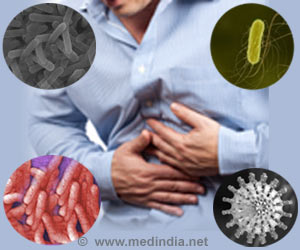Salmonella's weapon is a tiny nanoscale syringe

For several years, Prof. Dirk Bumann, from the Biozentrum of the University of Basel, has been studying the infection mechanisms of Salmonella. Together with his team, he has discovered that the bacterial protein EIIAGlc is not only responsible for the uptake of nutrients, which was previously known, but also plays a central role in Salmonella colonizing the host organism.
New function discovered for well known protein
Salmonella possesses a sophisticated injection apparatus, the type III secretion system. With this molecular syringe, it injects toxins directly into the host cells. These toxins manipulate host cell processes to create optimal growth conditions for the bacteria in hiding. Unforeseen, Bumann and his team uncovered an important teammate in the infection process, the protein EIIAGlc. The protein was already known for its many functions in bacterial metabolism, such as in the uptake of sugars molecules.
The researchers' attention was attracted by the fact that when EIIAGlc is defective Salmonella completely loses its capacity for intracellular replication and to spread throughout the organism. Further investigations finally brought the scientists from Basel onto the right track. The protein EIIAGlc docks onto the injection apparatus in the bacterium, stabilizes it and finally activates the release of the toxins. "We can clearly demonstrate that the activation of the secretion system is the main function of the protein EIIAGlc, while the many other described metabolic functions play a minor role in the occurrence of illness", says Bumann bringing his findings to the point.
Target molecule for antibiotic treatment
Advertisement
Advertisement











